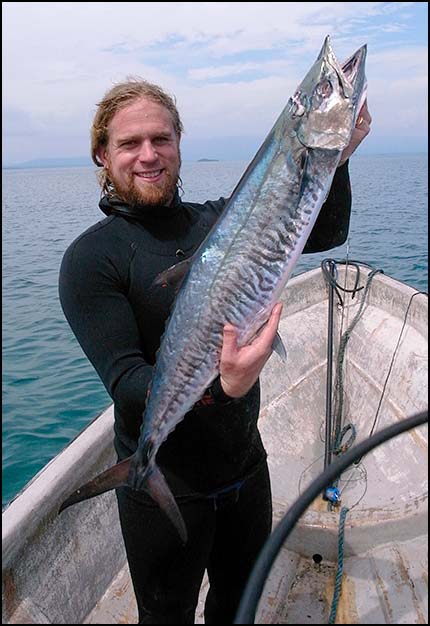
What about fish caught by family or friends? Check for fish and shellfish advisories to tell you how often you can safely eat those fish. Charter vessel/headboat operators must have a vessel permit for coastal migratory fish and must comply with possession limits.Enlarge in PDF | View Text Version | En español.Spanish mackerel must be landed with their heads and fins intact.Limits on the number of mackerel fishermen can catch.Recreational management measures include:.Spanish mackerel is an important species for recreational fishermen, who often use them as bait for big game fishing.Recreational catches of Spanish mackerel in the South Atlantic have remained stable while those in the Gulf of Mexico have decreased in recent years.In 2021, recreational harvest of Spanish mackerel totaled 16.8 million pounds.Hook-and-line fisheries for mackerel are selective and have little bycatch.Fishermen throw cast nets and set gillnets directly on schools of Spanish mackerel, so they rarely catch other species.Spanish mackerel are caught in coastal waters at or near the surface, so fishing gear has minimal impacts on habitat.Cast nets account for the majority of landings. Commercial fishermen use cast nets, gillnets, and hook-and-line gear to harvest Spanish mackerel.Gear types, habitat impacts, and bycatch:.Commercial landings of Spanish mackerel have generally been increasing in the Atlantic over the past decade.In 2021, commercial landings of Spanish mackerel totaled 5 million pounds and were valued at $6 million, according to the NOAA Fisheries commercial fishing landings database.The Atlantic States Marine Fisheries Commission works with the South Atlantic Fishery Management Council to coordinate management of Spanish mackerel fisheries in state waters to ensure they’re managed similarly to the fisheries in adjacent federal waters.Extends management area for Spanish mackerel through the Mid-Atlantic Fishery Management Council's jurisdiction (North Carolina to New York).Prohibition on purse seine and drift gillnet fishing gear.Seasons can close early if quotas are reached. Seasons for Atlantic and Gulf of Mexico stocks.Spanish mackerel must be landed with heads and fins intact in both the commercial and recreational fisheries.Minimum size limit to allow fish time to mature and spawn.The commercial allocation is 55 percent in the Atlantic and 57 percent in the Gulf of Mexico. Annual catch limits are divided between the commercial and recreational fisheries for the Atlantic and Gulf of Mexico stocks.Commercial fishermen must have a permit to harvest Spanish mackerel in federal waters.


Managed under the Fishery Management Plan for the Coastal Migratory Pelagic Resources in the Gulf of Mexico and South Atlantic Region:.NOAA Fisheries and the South Atlantic and Gulf of Mexico Fishery Management Councils manage the Spanish mackerel fishery.Dolphins and sharks prey on Spanish mackerel.They are often seen forcing schools of small fish into tight bundles and nearly pushing them out of the water when feeding. Spanish mackerel prey primarily on herring, menhaden, sardines, mullet, needlefish, and anchovy and, to a lesser degree, shrimp, crabs, and squid.They remain in the northern Gulf of Mexico until September and migrate south along the coast in the fall. In the eastern Gulf of Mexico, they migrate to the west of Cape San Blas, Florida.As waters cool later in the year, they return south to Florida waters. Along the Atlantic coast, Spanish mackerel spend the winter off Florida and move northward to North Carolina in early April and to New York in June.They migrate as the seasons and water temperatures change.Spanish mackerel swim in large, fast-moving schools.Females can have 500,000 to 1.5 million eggs over the spawning season. Spanish mackerel release their eggs in batches throughout the spawning season.They spawn from April to September off the North Carolina and Virginia coasts in the Atlantic Ocean and in shallow coastal waters in the eastern Gulf of Mexico.There are two distinct populations, one in the Gulf of Mexico and one in the Atlantic.Spanish mackerel grow fast, up to 13 pounds, and can live up to 12 years.


 0 kommentar(er)
0 kommentar(er)
